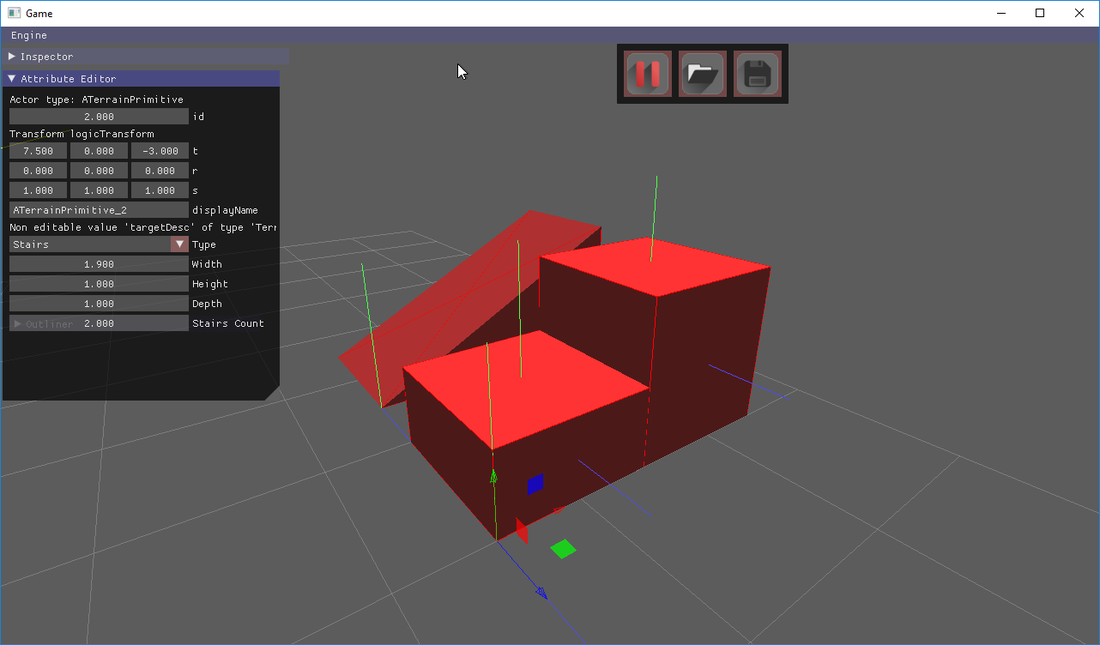I'm currently creating a level editor for myself. My game has a lot in common with 3D jump'n'run plaftomer games.
Basically I imagine my level being structured very similarly to this : " rel="external">
1st approach - a way to do this, is with some parameter based shapes : boxes, cylinders, slopes, stairs, ect. that are "skinnable" eg. I can specify a theme that will be used to texture them. Examples could be: forest, city, snow, cloud, ect.
I actually did some prototyping(see the screenshot) of that and it works just fine, especially well for the physics, since the collision shapes are well defined (a convex hull for the slope, 3 boxes for 3 stairs ect.). The thing that concerns me is the texturing. I'm not exactly sure how to do it. Basically I want my objects to be scalable, while textures maintain their size relatively constant in world space, and (if possible) make the texturing seamless across primitives, basically if I snap one primitive to another I want them to feel like 1 shape.
2nd approach - to have a set of predefined tiles, that are already textured and create shapes out of these tiles. This sounds good, But I really do not know how to approach this. Additionally if every tile has it's own collision shape for the physics the physics simulation will get pretty slow (I'm using bullet physics). Do you have any tips how should I approach this?
3rd approach - Well your experience here ![]() All suggestions are wellcome
All suggestions are wellcome










